ART NEWS:Jan.01
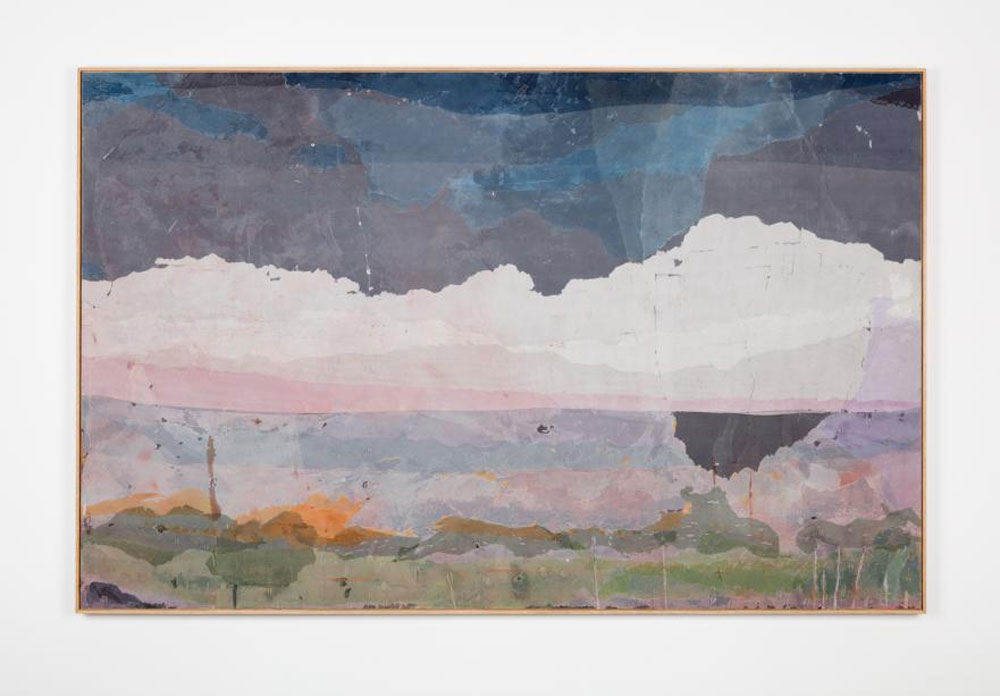 Petra Lindholm’sexhibition “Fever” consists of two parts. The new film “Bystanders” and a new series of textile assemblages under the title “Book of Changes”. Petra Lindholm works with different techniques and moves freely between the digital, two-dimensional, the analogue and tactile. The moving image, soundscapes and music has been part of her artistry since the beginning, in recent years combined with textile assemblages. In the films she uses both recorded and collected imagery that is processed and put together in loops and transparent layers. Short fragments of reality are extended and transformed into an abstracted, suggestive flow of images. The audio tracks amplifies the visual content with atmospheric sounds, samplings, voices and singing. The textile assemblages are natural extensions of scenes in the films into the physical space. Lindholms uses thin fabrics in different colours which are applied with glue on panels. The pictures are reminiscent of the films in their structure where layers are added until the finished composition appears. Info: Galleri Magnus Karlsson, Fredsgatan 12, Stockholm, Duration: 11/1-8/2/20, Days & Hours: Tue-Fri 12:00-17:00, Sat 12:00-16:00, www.gallerimagnuskarlsson.com
Petra Lindholm’sexhibition “Fever” consists of two parts. The new film “Bystanders” and a new series of textile assemblages under the title “Book of Changes”. Petra Lindholm works with different techniques and moves freely between the digital, two-dimensional, the analogue and tactile. The moving image, soundscapes and music has been part of her artistry since the beginning, in recent years combined with textile assemblages. In the films she uses both recorded and collected imagery that is processed and put together in loops and transparent layers. Short fragments of reality are extended and transformed into an abstracted, suggestive flow of images. The audio tracks amplifies the visual content with atmospheric sounds, samplings, voices and singing. The textile assemblages are natural extensions of scenes in the films into the physical space. Lindholms uses thin fabrics in different colours which are applied with glue on panels. The pictures are reminiscent of the films in their structure where layers are added until the finished composition appears. Info: Galleri Magnus Karlsson, Fredsgatan 12, Stockholm, Duration: 11/1-8/2/20, Days & Hours: Tue-Fri 12:00-17:00, Sat 12:00-16:00, www.gallerimagnuskarlsson.com
![]() Marie Losier’s solo exhibition “Eat my Makeup!” premieres an entirely new set of works with films, installations and drawings. Marie Losier’s artistic universe is built around friends, family and idols she summons in a crazy maelstrom. Mainly known for her work behind the camera, the artist, for some years now, has exhibited monotypes and installations connected with her films. Her imagery is inspired by the figures of the New York underground and experimental cinema of the Kuchar brothers to Paul Sharits, as well as by her accomplice Tony Conrad, and her new French friends Yann Gonzalez, Bertrand Mandico. She formed a part of this brotherhood during her years in New York. Others, like Felix Kubin, will come, thanks to her travels and her projects when back in Europe. They all are good times or bad times companions, faithful friends and the partners of a constantly changing and reconsidered art, which evokes Méliès as well as the clips on MTV and the beat poetry, the camp universe, Fluxus or video art and low fi. For her first exhibition at the gallery, the artist invites new stories, goes a little further in the drawings and the line, and entwines bestiary, fun fair, the birth of cinema and vanilla cream cake. Info: Anne Barrault Gallery, 51 rue des Archives, Paris, Duration: 11/1-22/2/20. Days & Hours: Tue-Sat 11:00-19:00, https://galerieannebarrault.com
Marie Losier’s solo exhibition “Eat my Makeup!” premieres an entirely new set of works with films, installations and drawings. Marie Losier’s artistic universe is built around friends, family and idols she summons in a crazy maelstrom. Mainly known for her work behind the camera, the artist, for some years now, has exhibited monotypes and installations connected with her films. Her imagery is inspired by the figures of the New York underground and experimental cinema of the Kuchar brothers to Paul Sharits, as well as by her accomplice Tony Conrad, and her new French friends Yann Gonzalez, Bertrand Mandico. She formed a part of this brotherhood during her years in New York. Others, like Felix Kubin, will come, thanks to her travels and her projects when back in Europe. They all are good times or bad times companions, faithful friends and the partners of a constantly changing and reconsidered art, which evokes Méliès as well as the clips on MTV and the beat poetry, the camp universe, Fluxus or video art and low fi. For her first exhibition at the gallery, the artist invites new stories, goes a little further in the drawings and the line, and entwines bestiary, fun fair, the birth of cinema and vanilla cream cake. Info: Anne Barrault Gallery, 51 rue des Archives, Paris, Duration: 11/1-22/2/20. Days & Hours: Tue-Sat 11:00-19:00, https://galerieannebarrault.com
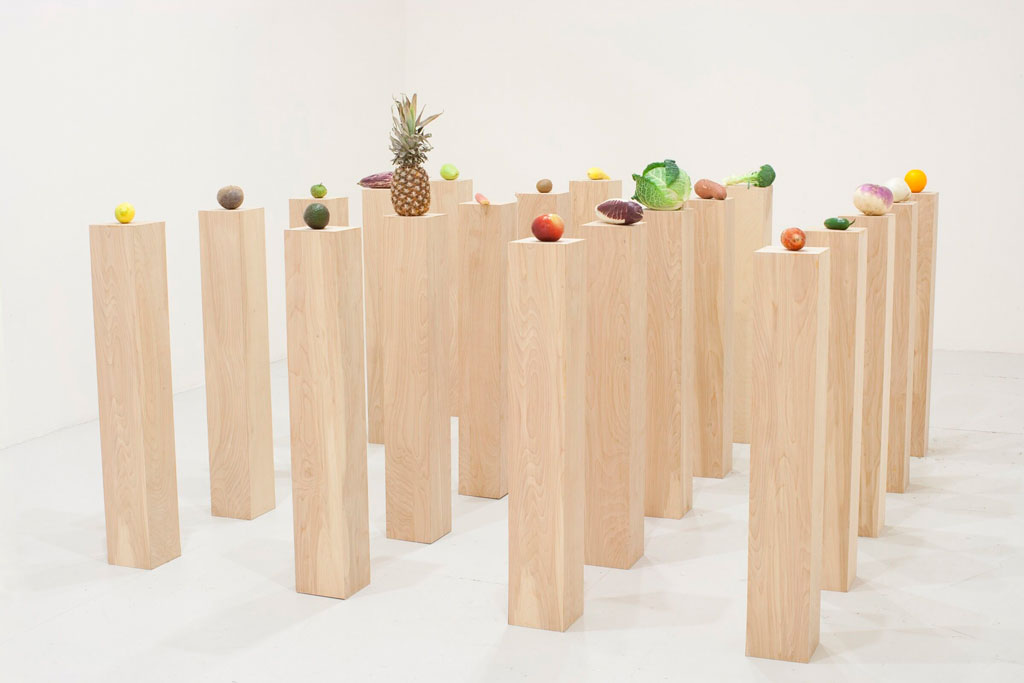 For the exhibition “fruits, vegetables; fruit and vegetable salad”, an untitled work by Darren Bader stands alone in a gallery of Whitney Museum of American Art. Fresh fruits and vegetables, “nature’s impeccable sculpture,” according to Bader, are presented as formal objects on pedestals. Before over-ripening, the produce is removed from the pedestals by museum staff. It is then chopped, sliced, shaved, and diced into a salad, which is served to visitors. The artwork is then refreshed with a new selection of fruits and vegetables. Info: Curator: Christie Mitchell, Whitney Museum of American Art, 99 Gansevoort Street, New York, Duration: 15/1-17/2/20, Days & Hours: Mon, Wed-Thu & Sat-Sun 10:30-18:00, Fri 10:30-22:00, https://whitney.org
For the exhibition “fruits, vegetables; fruit and vegetable salad”, an untitled work by Darren Bader stands alone in a gallery of Whitney Museum of American Art. Fresh fruits and vegetables, “nature’s impeccable sculpture,” according to Bader, are presented as formal objects on pedestals. Before over-ripening, the produce is removed from the pedestals by museum staff. It is then chopped, sliced, shaved, and diced into a salad, which is served to visitors. The artwork is then refreshed with a new selection of fruits and vegetables. Info: Curator: Christie Mitchell, Whitney Museum of American Art, 99 Gansevoort Street, New York, Duration: 15/1-17/2/20, Days & Hours: Mon, Wed-Thu & Sat-Sun 10:30-18:00, Fri 10:30-22:00, https://whitney.org
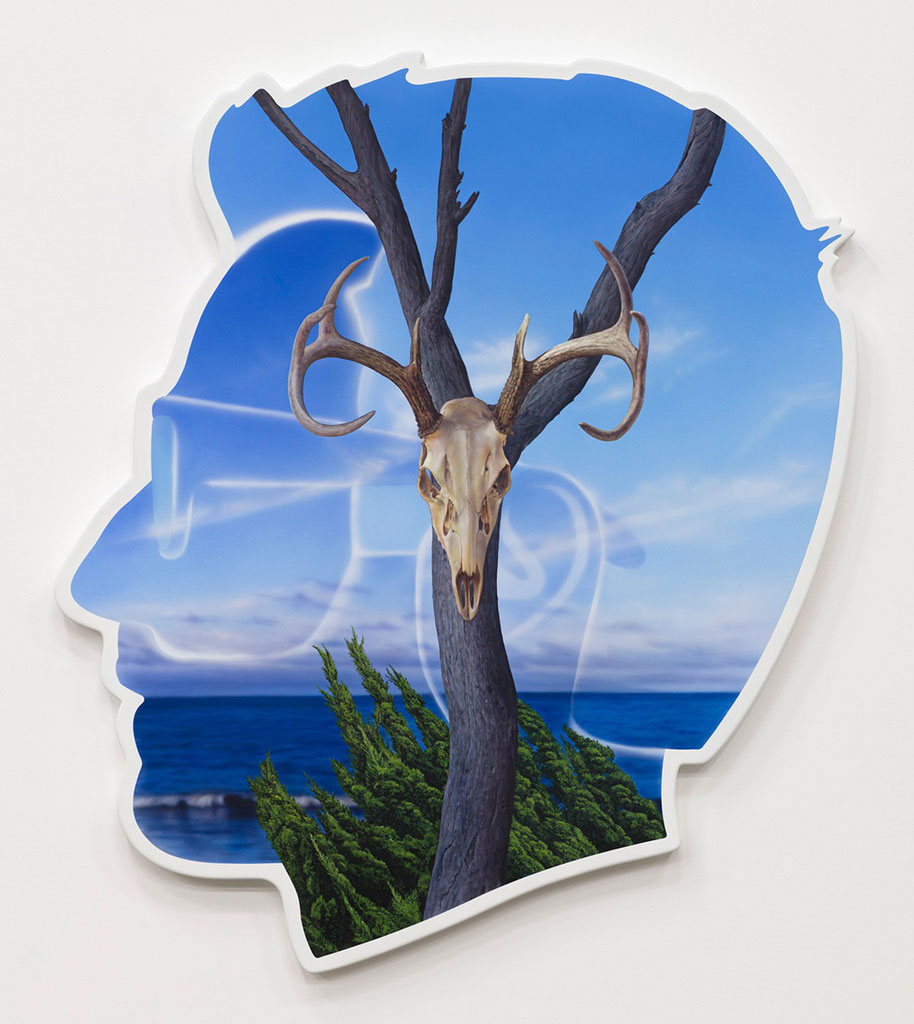 Alex Israel show new Self-Portraits in his exhibition “Always On My Mind”. The Self-Portraits are both a consciously self-branded signature made for the Instagram era and a deeper formal exploration into Southern California’s aesthetic history. Recently, Israel has shifted the series toward photorealism, in addition to developing an increasingly introspective and self-referential approach toward the art of self-portraiture. One painting shows him writing his signature across the back of another Self-Portrait; another depicts his hands as he takes a selfie. In “Always On My Mind”, Israel addresses the effortless visual gloss that 21st Century image culture and social media demand of their participants. A seamless “establishing shot” of Mulholland Drive is stitched together from multiple aerial photographs; a panorama of Griffith Park is foregrounded by a young woman who is engrossed not by the sweeping view before her, but by the picture of it that she has just taken with her iPhone.In other works, the original color-blocked portrait is rebranded in trompe l’oeil formats including a glowing neon sign to a stained glass window. The Self-Portraits examine the myth of the American West and an expanded idea of entertainment—two parallel narratives interwoven in the fabric of Israel’s hometown that also continue to inflect our culture at large. Info: Gagosian Gallery, 20 Grosvenor Hill, London, Duration: 16/1-14/3/20, Days & Hours: Tue-Sat 10:00-18:00, https://gagosian.com
Alex Israel show new Self-Portraits in his exhibition “Always On My Mind”. The Self-Portraits are both a consciously self-branded signature made for the Instagram era and a deeper formal exploration into Southern California’s aesthetic history. Recently, Israel has shifted the series toward photorealism, in addition to developing an increasingly introspective and self-referential approach toward the art of self-portraiture. One painting shows him writing his signature across the back of another Self-Portrait; another depicts his hands as he takes a selfie. In “Always On My Mind”, Israel addresses the effortless visual gloss that 21st Century image culture and social media demand of their participants. A seamless “establishing shot” of Mulholland Drive is stitched together from multiple aerial photographs; a panorama of Griffith Park is foregrounded by a young woman who is engrossed not by the sweeping view before her, but by the picture of it that she has just taken with her iPhone.In other works, the original color-blocked portrait is rebranded in trompe l’oeil formats including a glowing neon sign to a stained glass window. The Self-Portraits examine the myth of the American West and an expanded idea of entertainment—two parallel narratives interwoven in the fabric of Israel’s hometown that also continue to inflect our culture at large. Info: Gagosian Gallery, 20 Grosvenor Hill, London, Duration: 16/1-14/3/20, Days & Hours: Tue-Sat 10:00-18:00, https://gagosian.com
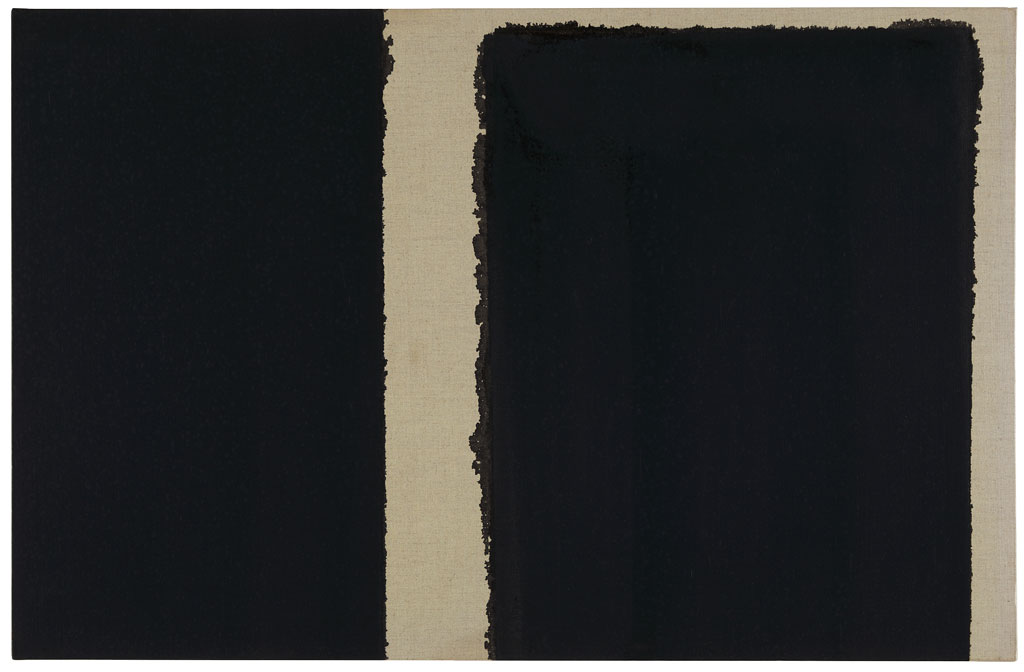 Yun Hyong-keun is associated with the Dansaekhwa movement, the name given to a group of influential Korean artists from the 1960s and 1970s who experimented with the physical properties of painting and prioritized technique and process. Focusing on the artist’s work from the late 1980s and 1990s, the paintings in his exhibition reflect a subtle evolution from Yun’s earlier canvases. The abstract forms in his works from the early 1990s become larger and darker. In the middle of the 1990s the lines in some of Yun’s paintings become tighter and straighter, and the edges of his forms appear less diffuse and more defined. While his art shows clear affinities to Minimalism, it also recalls the sublimity of Barnet Newman’s zip paintings, and the balance and diffuseness of Mark Rothko’s canvases. At the same time, Yun’s work exhibits the sophistication and restraint of traditional Korean scholarly painting, while also reflecting the artist’s unique sensitivity to color and material. Info: David Zwirner Gallery, 537 West 20th Street, New York, Duration: 17/1-7/3/20, Days & Hours: Tue-Sat 10:00-18:00, www.davidzwirner.com
Yun Hyong-keun is associated with the Dansaekhwa movement, the name given to a group of influential Korean artists from the 1960s and 1970s who experimented with the physical properties of painting and prioritized technique and process. Focusing on the artist’s work from the late 1980s and 1990s, the paintings in his exhibition reflect a subtle evolution from Yun’s earlier canvases. The abstract forms in his works from the early 1990s become larger and darker. In the middle of the 1990s the lines in some of Yun’s paintings become tighter and straighter, and the edges of his forms appear less diffuse and more defined. While his art shows clear affinities to Minimalism, it also recalls the sublimity of Barnet Newman’s zip paintings, and the balance and diffuseness of Mark Rothko’s canvases. At the same time, Yun’s work exhibits the sophistication and restraint of traditional Korean scholarly painting, while also reflecting the artist’s unique sensitivity to color and material. Info: David Zwirner Gallery, 537 West 20th Street, New York, Duration: 17/1-7/3/20, Days & Hours: Tue-Sat 10:00-18:00, www.davidzwirner.com
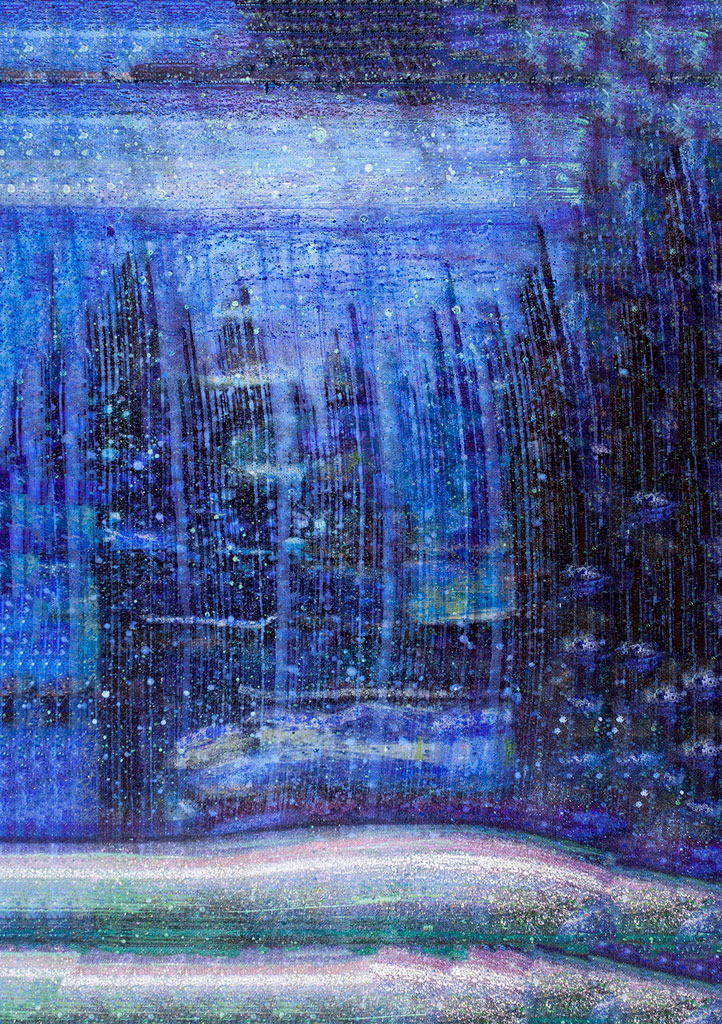 In his solo exhibition “Balancing Time Between Your Eyes” Kristian Touborg shows a series of highly personal, intimate and emotional works that subtly exist in the blurred area between the analogue and the digital. In the tension field between sculpture and painting, Touborg creates evocative and sensuous works where painterly gestures, bright colours and specs of silvery reflections create a strong poetic presence, both tactile and coolly distanced. In “Balancing Time Between Your Eyes” Touborg’s alluring compositions; a careful mixture of figurative and abstracted extracts, set the scene for rhizomatic and interlinked, yet wholly autonomous works in which lively dialogues are established between repetition and variations in both colour and form. In these works, we encounter glimpses of memories and the feeling of time rushing through our minds while we are submerged in the blue light of our digital screens. Although his paintings might appear to depict something ‘real’; for example, a familiar bedroom scene of two people equally lit up by the piercing blue light from a mac, as well as the evocative moon light, there are, in fact, no ‘originals’. Reproductions in various materials have been sewn together with canvas, leaving the viewer with a myriad of impressions. Info: Galerie Mikael Andersen, Bredgade 63. Copenhagen, Duration:17/1-7/3/20, Days & Hours: Tue-Fri 12:00-18:00, Sat 11:00-15:00, http://mikaelandersen.com
In his solo exhibition “Balancing Time Between Your Eyes” Kristian Touborg shows a series of highly personal, intimate and emotional works that subtly exist in the blurred area between the analogue and the digital. In the tension field between sculpture and painting, Touborg creates evocative and sensuous works where painterly gestures, bright colours and specs of silvery reflections create a strong poetic presence, both tactile and coolly distanced. In “Balancing Time Between Your Eyes” Touborg’s alluring compositions; a careful mixture of figurative and abstracted extracts, set the scene for rhizomatic and interlinked, yet wholly autonomous works in which lively dialogues are established between repetition and variations in both colour and form. In these works, we encounter glimpses of memories and the feeling of time rushing through our minds while we are submerged in the blue light of our digital screens. Although his paintings might appear to depict something ‘real’; for example, a familiar bedroom scene of two people equally lit up by the piercing blue light from a mac, as well as the evocative moon light, there are, in fact, no ‘originals’. Reproductions in various materials have been sewn together with canvas, leaving the viewer with a myriad of impressions. Info: Galerie Mikael Andersen, Bredgade 63. Copenhagen, Duration:17/1-7/3/20, Days & Hours: Tue-Fri 12:00-18:00, Sat 11:00-15:00, http://mikaelandersen.com
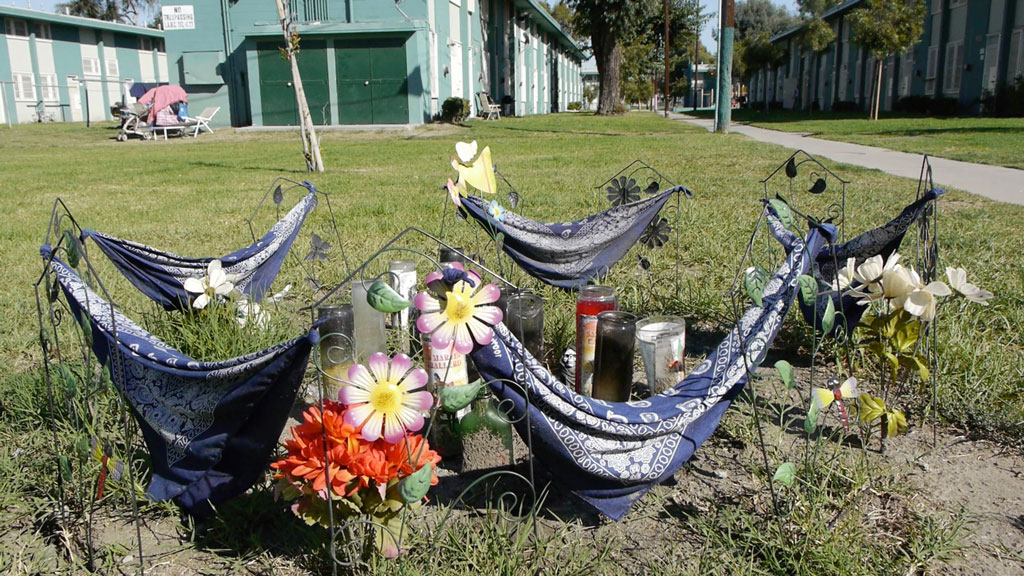 “Imperial Courts” is a 69-minute three-channel video installation by the Dutch photographer Dana Lixenberg. The work is the last link in the larger project of the same name in which Lixenberg recorded life in Imperial Courts, a South Central Los Angeles neighbourhood, between 1993 and 2015, through photography, a web documentary and audio recordings. The video invites the viewer into the residents’ everyday lives through interconnected scenes that gradually unfold on the three screens. She chronicles ordinary and dramatic events, parties and special occasions, interspersed with footage of routine and banal scenes, de-sensationalised and stripped of spectacle. Lixenberg masterfully captures the ebb and flow of life within a community that is often regarded as socially isolated. Like Bertien van Manen, whose work is being shown at the same time in the Stedelijk Museum, Lixenberg builds close relationships with her subjects and spends years documenting their lives. Her working method, however, is very different: Lixenberg approaches her subject with observation and distance, uses a large format camera and strives for ultimate sharpness. Info: Stedelijk Museum, Museumplein 10, Amsterdam, Duration: 18/1-10/5/20, Days & Hours: Mon-Thu & Sat-Sun 10:00-18:00, Fri 10:00-22:00, www.stedelijk.nl
“Imperial Courts” is a 69-minute three-channel video installation by the Dutch photographer Dana Lixenberg. The work is the last link in the larger project of the same name in which Lixenberg recorded life in Imperial Courts, a South Central Los Angeles neighbourhood, between 1993 and 2015, through photography, a web documentary and audio recordings. The video invites the viewer into the residents’ everyday lives through interconnected scenes that gradually unfold on the three screens. She chronicles ordinary and dramatic events, parties and special occasions, interspersed with footage of routine and banal scenes, de-sensationalised and stripped of spectacle. Lixenberg masterfully captures the ebb and flow of life within a community that is often regarded as socially isolated. Like Bertien van Manen, whose work is being shown at the same time in the Stedelijk Museum, Lixenberg builds close relationships with her subjects and spends years documenting their lives. Her working method, however, is very different: Lixenberg approaches her subject with observation and distance, uses a large format camera and strives for ultimate sharpness. Info: Stedelijk Museum, Museumplein 10, Amsterdam, Duration: 18/1-10/5/20, Days & Hours: Mon-Thu & Sat-Sun 10:00-18:00, Fri 10:00-22:00, www.stedelijk.nl
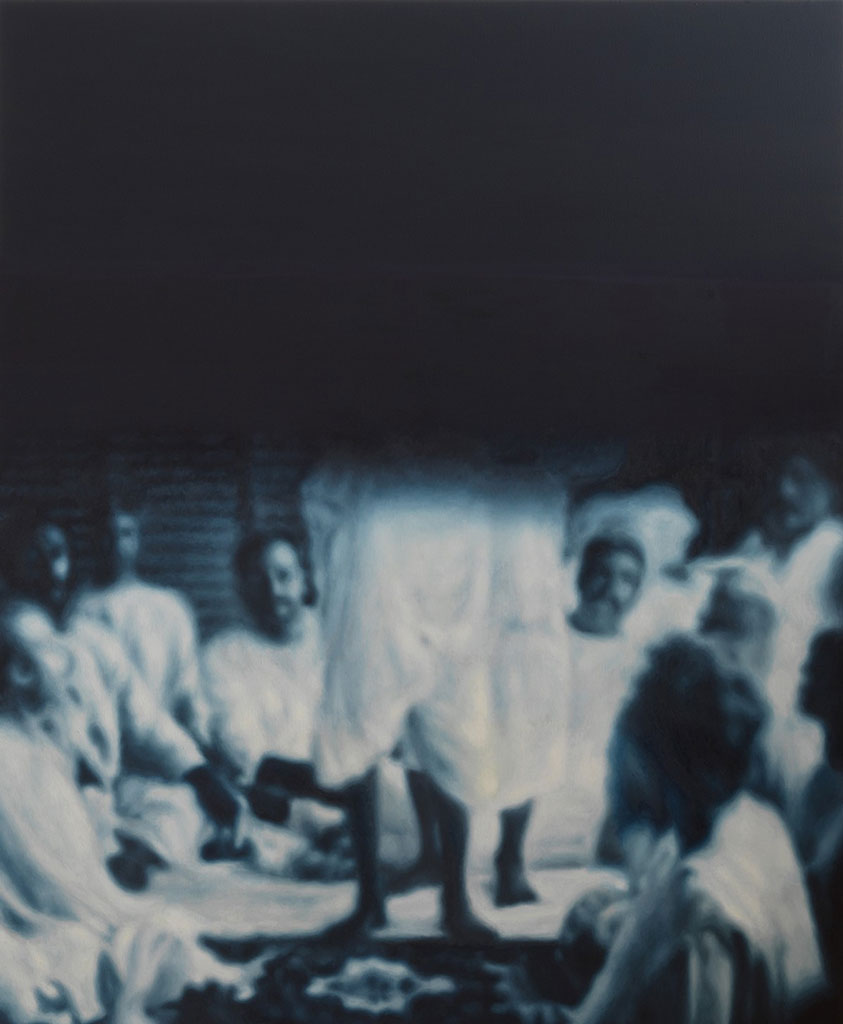 Y.Z. Kami has his first solo exhibition in Italy entitled “Night Paintings”. His series “Night Paintings” (2017–) are composed largely from a single shade of indigomixed with various gradations of white. Each canvas in this new series is filled with blue-whitish apparitions that float just past the limits of materiality and concrete representation. These outlines shift between seemingly solid, liquid, and gaseous states—an osseous structure melts into a milky swirl, which in turn evaporates into a coil of smoke—yet their true forms and references ultimately remain veiled beneath hazy brushwork. With their soft edges and shimmering biomorphic patterns, Kami’s paintings limn the boundaries between the earthly and the sublime. Subtly informed by his cultural heritage yet resolutely cosmopolitan and secular, Kami’s oeuvre communicates a philosophical and spiritual reflectiveness; at the same time, he visually obscures and anonymizes his subjects, preferring to approach broader questions of the infinite and the ineffable rather than delving into the specifics of a religious existence. Info: Gagosian Gallery, Via Francesco Crispi 16, Rome, Duration: 18/1-21/3/20, Days & Hours: Tue-Sat 10:30-19:00, https://gagosian.com
Y.Z. Kami has his first solo exhibition in Italy entitled “Night Paintings”. His series “Night Paintings” (2017–) are composed largely from a single shade of indigomixed with various gradations of white. Each canvas in this new series is filled with blue-whitish apparitions that float just past the limits of materiality and concrete representation. These outlines shift between seemingly solid, liquid, and gaseous states—an osseous structure melts into a milky swirl, which in turn evaporates into a coil of smoke—yet their true forms and references ultimately remain veiled beneath hazy brushwork. With their soft edges and shimmering biomorphic patterns, Kami’s paintings limn the boundaries between the earthly and the sublime. Subtly informed by his cultural heritage yet resolutely cosmopolitan and secular, Kami’s oeuvre communicates a philosophical and spiritual reflectiveness; at the same time, he visually obscures and anonymizes his subjects, preferring to approach broader questions of the infinite and the ineffable rather than delving into the specifics of a religious existence. Info: Gagosian Gallery, Via Francesco Crispi 16, Rome, Duration: 18/1-21/3/20, Days & Hours: Tue-Sat 10:30-19:00, https://gagosian.com
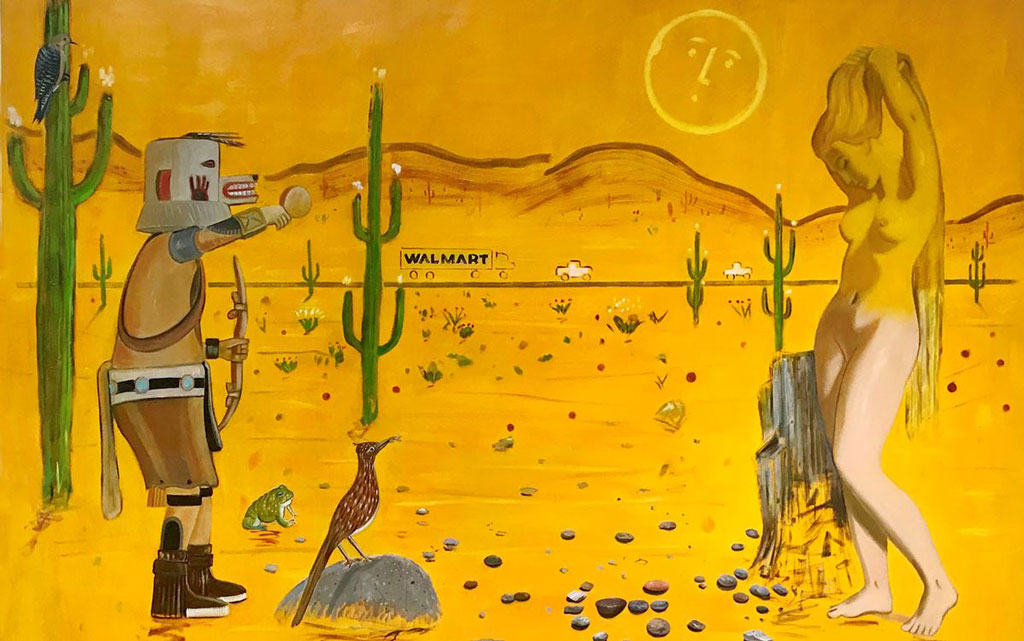 Raul Guerrero’s solo exhibition “Sonoran Desert: Flora, Fauna, Artifacts” acts as an ethnographic study into the region that encompasses Northwest Mexico and Southwestern United States. It’s the land from which Guerrero’s family came and where he lived as a youth. Subsequently it is also the landscape that has inspired his artistic thinking, often directly related to the indigenous people of the area. Guerrero’s paintings piece together like snapshots that lend themselves to a larger narrative. One painting titled “Canyon de Chelly”, comes from a photograph the artist took in 1989. While standing opposite of the famous cliff dwellings, he looked down and spotted a pile of multi-colored stones that beckoned him to be rearranged into a portrait. Years later he reflects on the photograph and understands that the act of arranging the stones was an attempt to channel the former inhabitants of the dwellings. The stone portrait appears in several other paintings by Guerrero, serving as a metaphor for the way in which his ancestors appear in his own creative process. Also included in the show are a new series of paintings on rotating discs. These works appropriate iconography from the Hohokam and Mimbres culture, two indigenous societies that occupied the Northern Region of the Southwest-now parts of Arizona and Sonora, Mexico. Info: Kayne Griffin Corcoran Gallery, 1201 S La Brea Avenue, Los Angeles, Duration: 18/1-7/3/20, Days & Hours: Tue-Sat 10:00-18:00, www.kaynegriffincorcoran.com
Raul Guerrero’s solo exhibition “Sonoran Desert: Flora, Fauna, Artifacts” acts as an ethnographic study into the region that encompasses Northwest Mexico and Southwestern United States. It’s the land from which Guerrero’s family came and where he lived as a youth. Subsequently it is also the landscape that has inspired his artistic thinking, often directly related to the indigenous people of the area. Guerrero’s paintings piece together like snapshots that lend themselves to a larger narrative. One painting titled “Canyon de Chelly”, comes from a photograph the artist took in 1989. While standing opposite of the famous cliff dwellings, he looked down and spotted a pile of multi-colored stones that beckoned him to be rearranged into a portrait. Years later he reflects on the photograph and understands that the act of arranging the stones was an attempt to channel the former inhabitants of the dwellings. The stone portrait appears in several other paintings by Guerrero, serving as a metaphor for the way in which his ancestors appear in his own creative process. Also included in the show are a new series of paintings on rotating discs. These works appropriate iconography from the Hohokam and Mimbres culture, two indigenous societies that occupied the Northern Region of the Southwest-now parts of Arizona and Sonora, Mexico. Info: Kayne Griffin Corcoran Gallery, 1201 S La Brea Avenue, Los Angeles, Duration: 18/1-7/3/20, Days & Hours: Tue-Sat 10:00-18:00, www.kaynegriffincorcoran.com
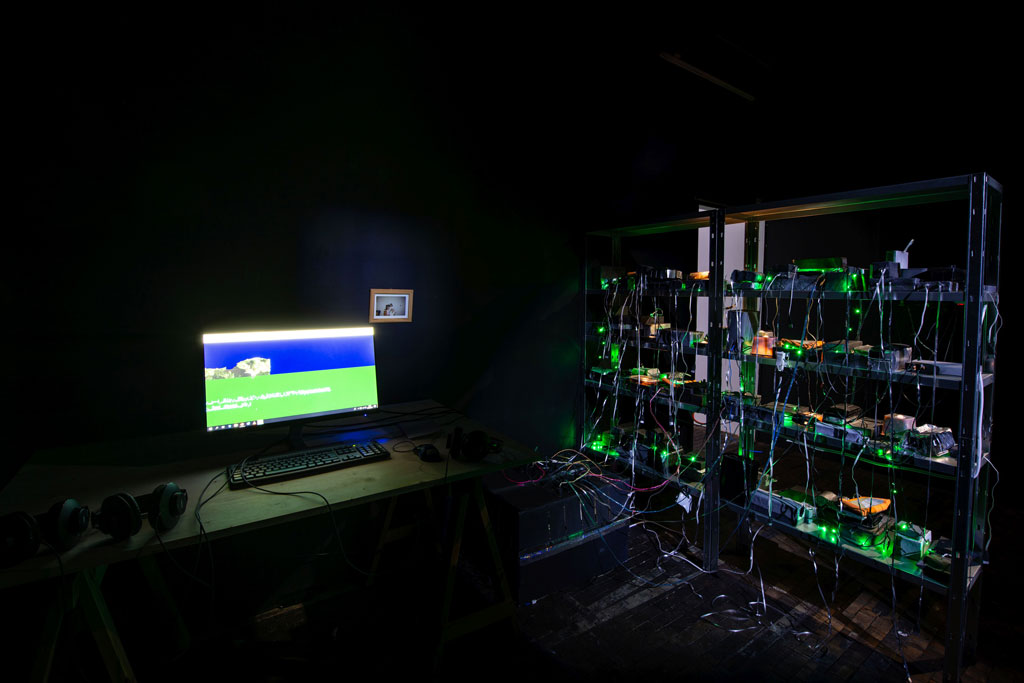 How will the at once dematerialized and delocalized dynamics of power structures be impacted in both their evident economic and inevitably political manifestations if the World Wide Web is disconnected? But also, what can still be said or done in the meantime? How does one occupy—or not— what is essentially borrowed time and space, a space-time henceforth to be shared between digital and physical realities. In the wake of these reflections, the artistic proposals that echo these considerations have here been gathered. Though the exhibition “The Dead Web – The End” was initially composed of Quebec artists, Hungarian artists were subsequently added to it for the occasion ‑ from a call for proposals, as well as from the Ludwig Museum Collection, and of early web-based artworks from the C3 Center for Culture & Communication Foundation archives; in addition to artworks by Swiss artists which were part of “The Dead Web” exhibition at the last edition of the Mapping Festival. This approach thus provides a particular perspective in which to build and unpack our idea of the Web, and, at the same time, its absence. Info: Ludwig Museum, Palace of Arts, Komor Marcell u. 1, Budapest, Duration: 24/1-26/4/20, Days & Hours: Tue-Sun 10:00-22:00, www.ludwigmuseum.hu
How will the at once dematerialized and delocalized dynamics of power structures be impacted in both their evident economic and inevitably political manifestations if the World Wide Web is disconnected? But also, what can still be said or done in the meantime? How does one occupy—or not— what is essentially borrowed time and space, a space-time henceforth to be shared between digital and physical realities. In the wake of these reflections, the artistic proposals that echo these considerations have here been gathered. Though the exhibition “The Dead Web – The End” was initially composed of Quebec artists, Hungarian artists were subsequently added to it for the occasion ‑ from a call for proposals, as well as from the Ludwig Museum Collection, and of early web-based artworks from the C3 Center for Culture & Communication Foundation archives; in addition to artworks by Swiss artists which were part of “The Dead Web” exhibition at the last edition of the Mapping Festival. This approach thus provides a particular perspective in which to build and unpack our idea of the Web, and, at the same time, its absence. Info: Ludwig Museum, Palace of Arts, Komor Marcell u. 1, Budapest, Duration: 24/1-26/4/20, Days & Hours: Tue-Sun 10:00-22:00, www.ludwigmuseum.hu
